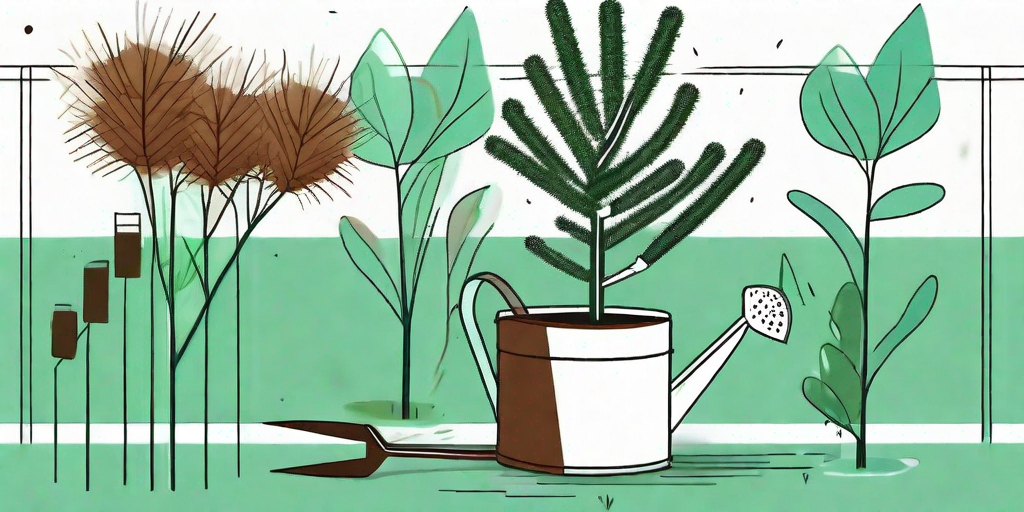
If your bottle brush tree is looking a bit under the weather, don't despair. With a bit of TLC and some cheeky horticultural know-how, you can bring it back to its former glory. So, put on your gardening gloves, grab your trusty trowel, and let's get to work!
Understanding Your Bottle Brush Tree
Before we dive into the nitty-gritty of reviving your bottle brush tree, it's important to understand what makes this plant tick. After all, you wouldn't try to fix a car without knowing how the engine works, right? The same principle applies to your bottle brush tree.
The bottle brush tree, or Callistemon, is a native of Australia and loves a warm, sunny spot. It's known for its vibrant red, brush-like flowers that attract bees and birds. But, like any plant, it can suffer from a range of issues, from pests to poor soil conditions.
Common Problems
Some common problems that can cause your bottle brush tree to look a bit worse for wear include root rot, fungal diseases, and pest infestations. Over-watering, poor drainage, and lack of sunlight can also take their toll on your tree.
Identifying the problem is the first step to reviving your tree. Look for signs of disease or pest activity, such as discolored leaves, wilting, or unusual growth patterns. Once you've identified the problem, you can take steps to address it.
Reviving Your Tree: A Step-by-Step Guide
Now that we've covered the basics, let's get down to the business of reviving your tree. Remember, patience is key here. Your tree didn't get sick overnight, and it won't recover overnight either. But with a little persistence, you'll have your tree back in tip-top shape in no time.
Step 1: Assess the Damage
Take a good look at your tree. Are the leaves yellowing or wilting? Are there signs of pests or disease? Make a note of any symptoms you see. This will help you determine the best course of action.
If the damage is severe, you may need to consult a professional. But in many cases, you can handle the problem yourself with a bit of elbow grease and the right tools.
Step 2: Address the Problem
Once you've identified the problem, it's time to take action. This could involve adjusting your watering schedule, improving drainage, or treating for pests or disease.
Remember, it's important to address the root cause of the problem, not just the symptoms. For example, if your tree is suffering from root rot due to over-watering, simply treating the rot won't solve the problem. You'll need to adjust your watering habits to prevent the problem from recurring.
Step 3: Provide Ongoing Care
Reviving your tree isn't a one-and-done deal. It's important to provide ongoing care to keep your tree healthy. This includes regular watering, fertilizing, and pruning.
Remember, a healthy tree is a happy tree. And a happy tree makes for a happy gardener!
FAQs
Got questions? We've got answers! Here are some of the most commonly asked questions about reviving a bottle brush tree.
How often should I water my bottle brush tree?
As a general rule, you should water your bottle brush tree once a week. However, this can vary depending on the weather and the size of your tree. In hot, dry conditions, you may need to water more frequently. On the other hand, in cool, wet conditions, you may need to water less frequently.
What kind of fertilizer should I use?
A slow-release, balanced fertilizer is a good choice for bottle brush trees. Look for a fertilizer with a ratio of nitrogen, phosphorus, and potassium (N-P-K) of about 10-10-10. Apply the fertilizer according to the package instructions.
How do I know if my tree has a disease or pest infestation?
Signs of disease or pest infestation can vary, but common symptoms include discolored leaves, wilting, stunted growth, and unusual growth patterns. If you suspect your tree is sick, it's best to consult a professional for advice.
Final Thoughts
Reviving a bottle brush tree may seem like a daunting task, but with a bit of knowledge and some elbow grease, you can bring your tree back to life. Remember, the key is to identify the problem, address it, and provide ongoing care to keep your tree healthy. Happy gardening!















